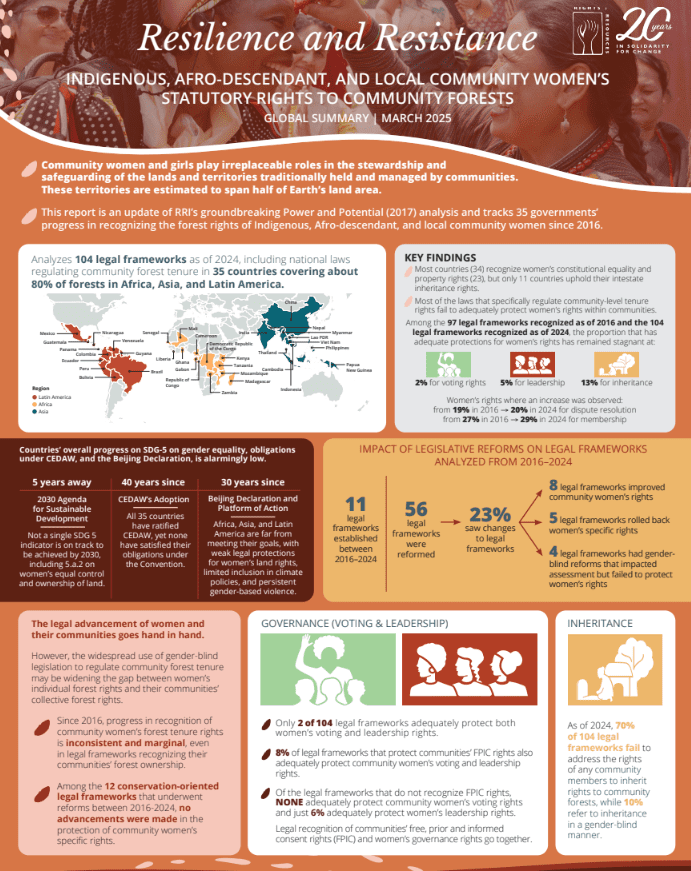Date: March 11, 2025
This report provides a critical update to the 2017 Rights and Resources Initiative (RRI) analysis Power and Potential. It evaluates the extent to which national laws, as of 2024, recognize the specific community forest rights of Indigenous, Afro-descendant, and local community women. The analysis covers 35 countries in Africa, Asia, and Latin America that encompass about 80 percent of forests in these three regions and 42 percent of global forest area. Five countries (Ecuador, Ghana, Lao PDR, Madagascar, and Nicaragua) are featured in the dataset for the first time. All reviewed countries have ratified the Convention on the Elimination of All Forms of Discrimination against Women (CEDAW, 1979) and adopted the Beijing Declaration and Platform for Action (1995).
The critical importance of recognizing gender equality and securing the community-based land and resource tenure rights of Indigenous, Afro-descendant, and local community women is garnering increasing global attention and acceptance. Much of this progress is attributable to Indigenous, Afro-descendant, and local community women who have for generations engaged in protracted advocacy for the legal recognition of their equal rights, despite being inadequately supported and commonly overlooked. However, despite advancements in international law and national legislative reform processes across Africa, Asia, and Latin America, the tenure rights of Indigenous, Afro-descendant, and local community women remain inadequately recognized. This study provides an up-to-date assessment of the status of Indigenous, Afro-descendant, and local community women’s forest tenure rights across 35 key forest countries in the Global South. In doing so, it aims to inform and encourage gender-transformative actions by governments and other stakeholders impacting community forests, lands and other resources.
https://doi.org/10.53892/QSTZ6441


